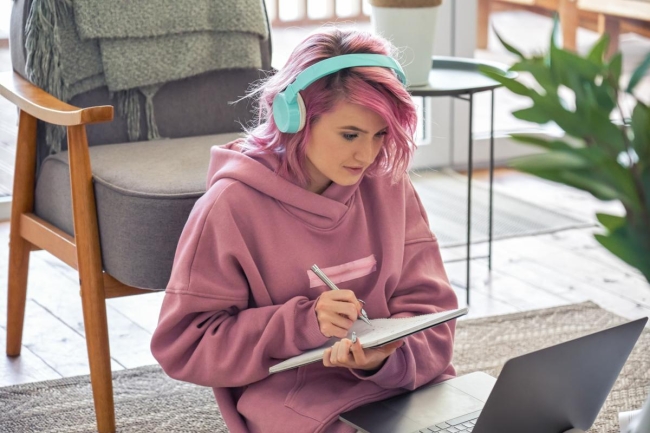You have /5 articles left.
Sign up for a free account or log in.

Greater use of digital course materials one of the top tech priorities as viewed by students.
iStock / Getty Images Plus - insta_photos
I was in China during the SARS epidemic in 2003. When schools shut down to prevent the spread of the virus, students all over the country were told to follow class schedules broadcast on television. Luckily for me, our house had just gotten internet, albeit a low-bandwidth connection that ran on a phone line and made all sorts of E.T. noises when you clicked “connect.” When I think of that time, I think of vacation. I would sleep until midday, skipping the TV classes, then go online to watch recordings from the day before. I doubt I learned anything the school wanted me to. And that was my exposure to version 1.0 of remote learning.
When the world shut down for COVID in 2020, I was doing my M.B.A. The shift to online learning felt similar at first. But I realized I was still learning. While it began as Zoom school, in a few short months my online classes went from talking heads and narrating slides to compelling storytelling with video clips from news and movies, podcasts and interactive simulations. Although I missed in-person interactions with my classmates, learning felt as effective and engaging as when we were in physical classrooms.
We’d come a long way since SARS—and the difference was technology. Since the onset of the pandemic, there has been a 19 percent increase in overall use of learning technologies. In particular, more than two-thirds of faculty members have expressed increasing acceptance toward the use of digital course materials through the experience of teaching during the pandemic.
Students, likewise, are eager for this trend of adoption to continue: one in three students wants to see more digital materials as part of their learning, according to the recent survey of students’ perspectives about technology on campus, conducted by Inside Higher Ed and College Pulse with support from Kaplan. That makes the use of digital course materials one of the top tech priorities as viewed by students.
[block:block=176]
When today’s students talk about “digital materials,” they usually mean video: 60 percent of Gen Z Americans are on TikTok and spend about 5 percent of their waking hours consuming short-form video. Nearly 60 percent of Gen Z learners prefer YouTube to printed books for learning. It should be no surprise, then, that virtually all educators today supplement their classes with video.
If you’re not Gen Z, this may sound horrific, the product of short attention spans and moral turpitude. But keep this in mind: research is demonstrating that using video in learning improves student performance. Notably, in a study by researchers at the University of Maryland, videos, especially interactive videos, improved student performance by as much as 30 percent.
Where are all these educational videos supposed to come from? For most educators, the process is painful. Many express frustration trying to find the right YouTube video for a given learning objective or lesson. That’s a problem in an era when both K-12 teachers and college and university instructors are among the most burned-out groups of the U.S. workforce. Spending hours locating the right video may be the straw that breaks the camel’s back. Or maybe many will just go without.
This calls for a solution. Instead of putting the burden on individual educators, it’s time for providers and distributors to step up more and include video as an integral part of learning materials.
There are a few options for getting this done. Some educational publishers and ed-tech companies have the scale to do it on their own. In August 2022, Pearson launched its new Pearson+ platform as part of its “digital first” transformation, featuring more than 10,000 high-quality short-form videos in 16 course areas geared toward college students.
For smaller publishers and producers of supplemental material, in-house video production is expensive and difficult to scale, and negotiating and clearing rights with broadcasters and content creators is time-consuming and expensive. Fortunately, an emerging group of providers is helping to address this challenge.
Aggregators like Boclips are taking the pressure off publishers and schools alike by gathering video clips and aligning them to learning objectives. Instead of exerting time and energy to search out the best video content themselves, it’s now possible for educators to access vetted content from sources like PBS, Bloomberg and Crash Course, all in the same place. Think of it as the next stage in the evolution of educational videos: what was once a Wild West is now more structured, more organized and more likely to be useful for students and teachers alike.
While SARS disappeared within a year, it looks like we’ll be living with the aftereffects of COVID for a lot longer. In education, that means not returning to the status quo of text-based course materials—and embracing the potential of video to engage a new generation of learners. In this brave new world, publishers and curriculum providers who recognize the role video plays in the future of education will set themselves up for longer-term success.




